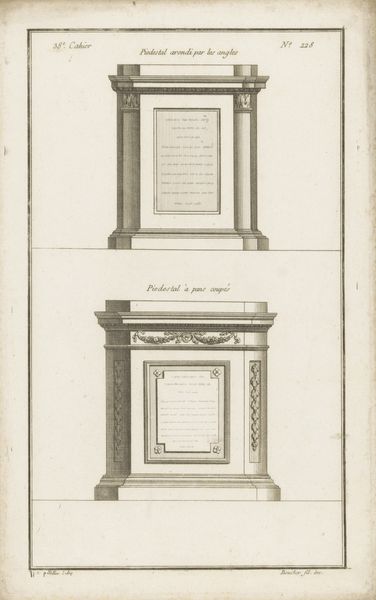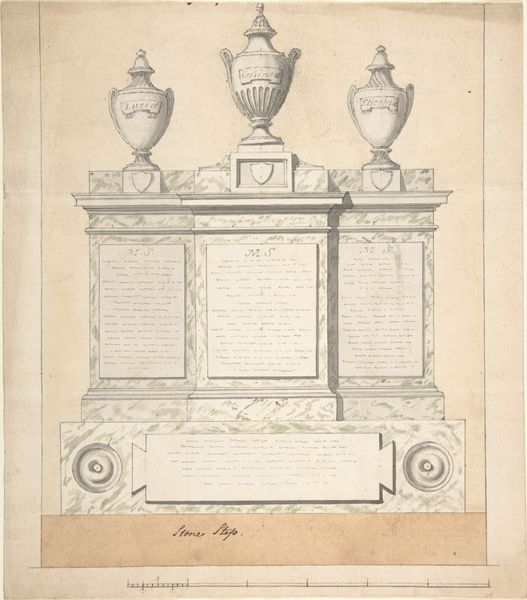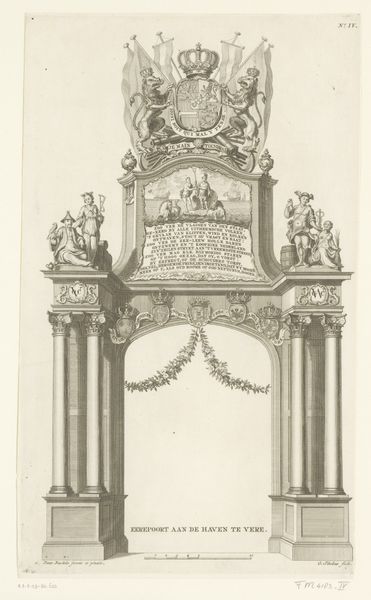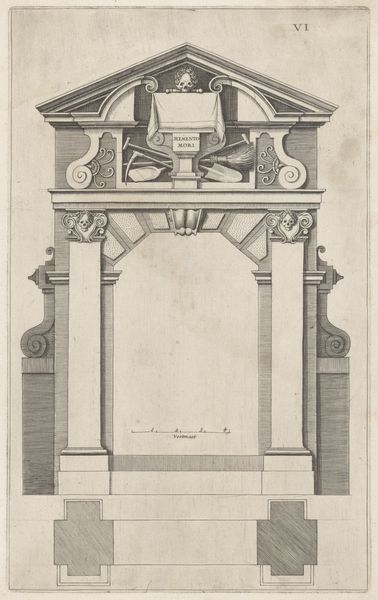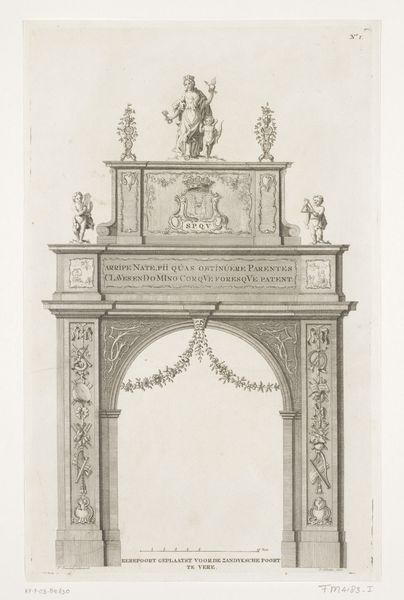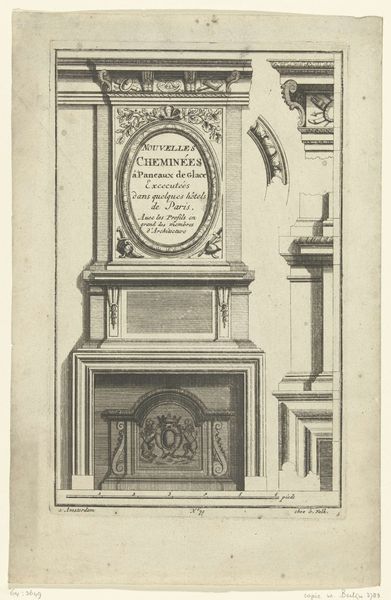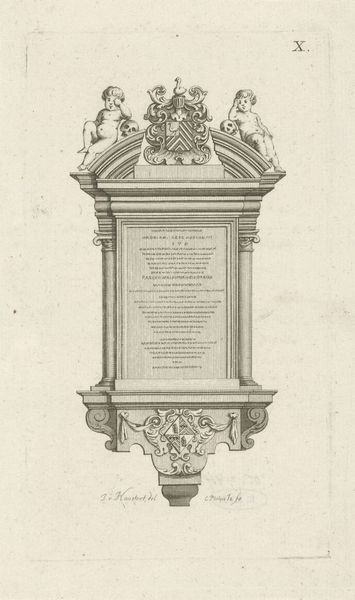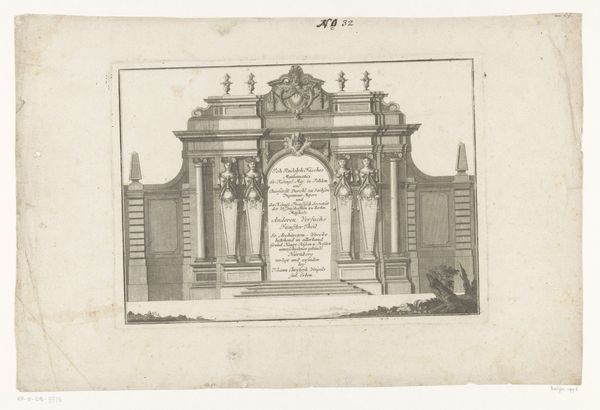
drawing, paper, engraving
#
drawing
#
neoclacissism
#
paper
#
engraving
Dimensions: height 329 mm, width 206 mm
Copyright: Rijks Museum: Open Domain
Curator: Ah, yes, Jean Pelletier's "Voetstuk met lauwerkrans," or "Pedestal with Laurel Wreath," created between 1772 and 1779. It's a drawing, an engraving on paper, currently held here at the Rijksmuseum. Editor: My initial impression is one of idealized solemnity. The careful detail feels almost… cold, in a way that speaks to a specific social ambition. The whole composition is meticulously structured. Curator: Exactly! Consider the historical context. Neoclassicism was in vogue, mirroring the fascination with the ideals of ancient Greece and Rome. Pelletier's work reflects that by displaying precision in construction that emulates the classical values. Editor: Right, the Neoclassical aesthetic promoted social order. Can we see this as a kind of production blueprint? A template promoting cultural values about power through formal qualities for the consumption of a class with money and influence? What exactly was this pedestal intended to hold? Curator: We cannot know for sure as there are no surviving sources. But given the style and period, perhaps it was conceived as part of larger architectural embellishment or sculptural support for a garden? The engraving process itself—the materials, the skilled labor—indicates this wasn't a casual sketch but an artifact created for wider consumption. Its serial production allowed ideas about classicism to spread through society. Editor: And the laurel wreath, the carefully placed text within, what story do these visual elements contribute to the dialogue around art patronage? Were these meant to be customizable templates for clients? It's about power and display—what are we meant to learn from this display of mastery? It is almost like early branding... Curator: It speaks volumes about the market for classicism and the power it signaled. A piece such as this illuminates so much about the production and consumption of ideas. Editor: Agreed. Studying this design helps understand the art world dynamics back then, reflecting artistic exchange across different layers of society. Curator: Indeed. And reminds us about the power of design as social text to express culture and class.
Comments
No comments
Be the first to comment and join the conversation on the ultimate creative platform.
